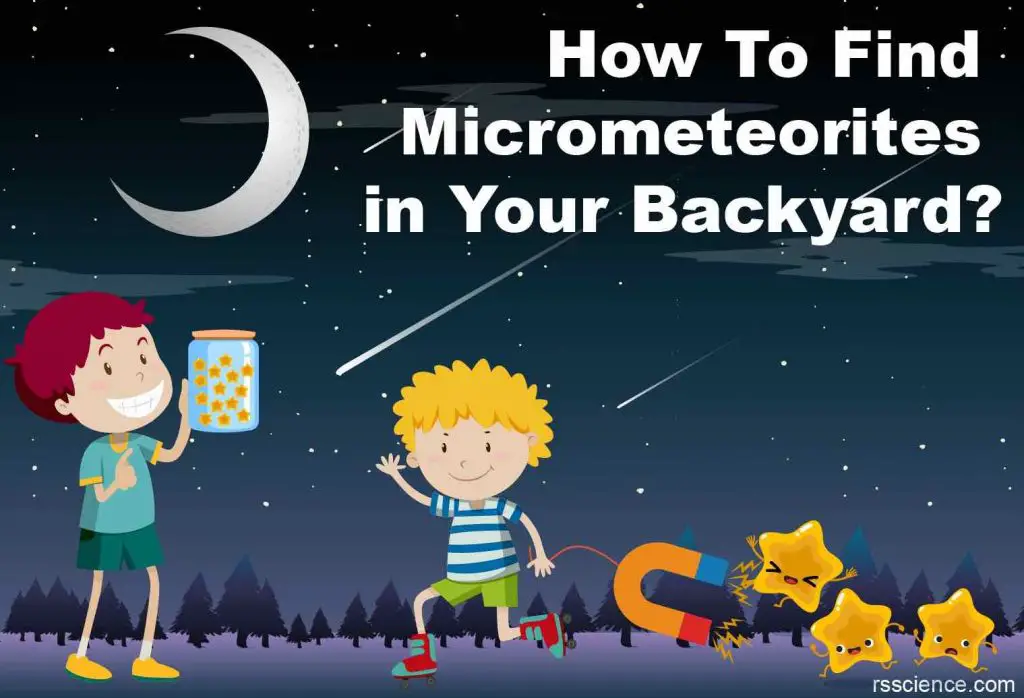On summer nights, see a silent shooting star slides on and leaves. Seizing the opportunity to make a wish in your mind. This is an unforgettable memory of a camping trip.
Do you like to keep that piece of memory physically? I mean that “a piece of meteor.” OK, it is not the same meteor. But you can find some tiny pieces of meteors (or micrometeorites) in populated areas, even in your backyard. What a surprise! All you need is to grab a strong magnet and go hunting.
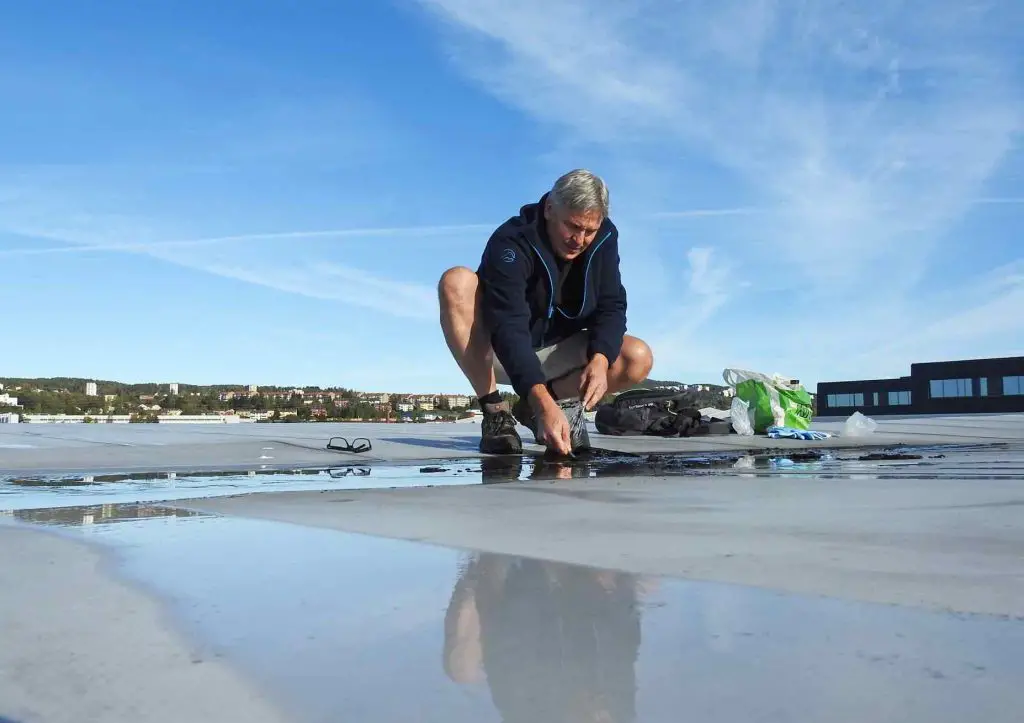
[In this image] Jon Larsen was searching for urban micrometeorites on a roof.
Image source: Jon Larsen & Jan Braly Kihle
These alien stones are absolutely gorgeous (see examples below) and unique, and it is worthwhile to look at them under your microscope. They belong to the oldest matter from before the planets were formed. Some stardust is even older than the sun, which has traveled farther than anything else on Earth. This article will show you how to become a micrometeorite hunter! You can also join Jon Larsen’s Project Stardust to invite more friends to go out and find micrometeorites.

This article covers
Part 1. Meteoroid, Meteor and Meteorite
What are meteoroid, meteor and meteorite?
A meteoroid is a small object in outer space. It could be rocky or metallic. Its size could range from small grains to one-meter-wide objects. Small meteoroids are also called micrometeoroids or space dust. Most meteoroids are fragments of comets or asteroids. Sometimes, an asteroid hitting the Moon or Mars could also eject the collision impact debris into space and become the materials for meteoroids.
When a meteoroid (or a comet/asteroid) falls through the Earth’s atmosphere, it travels at a very high speed (~ 72,000 km per hour or 50 times faster than a rifle bullet). The friction between the meteoroid and the atmosphere creates an extremely high temperature and melts most parts of the meteoroid. Scientists estimate that an average meteoroid could lose around 90% of its mass during atmospheric flight. This also creates a bright streak of light or a glowing particle with a trail. This phenomenon is called a meteor or “shooting star.”
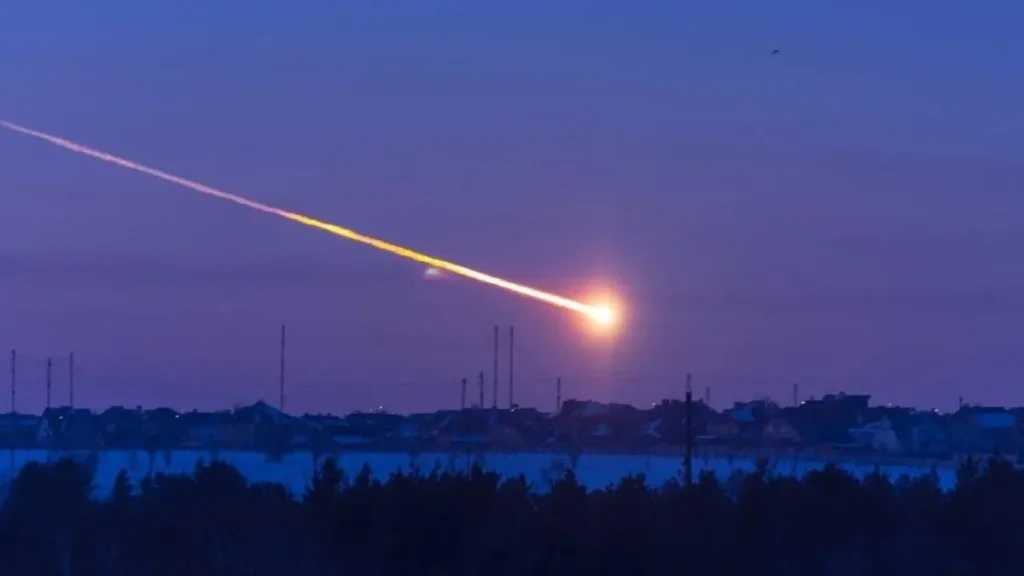
[In this image] A meteor looks like a fireball with a long tail traveling through the Earth’s atmosphere and burning out.
Image source: cnet
A series of many meteors appearing in a short period of time is called a meteor shower. Meteor showers often occur as Earth passes through the path of a comet. Bits of rock and ice left behind by the comet plunge through Earth’s atmosphere, creating many meteors.
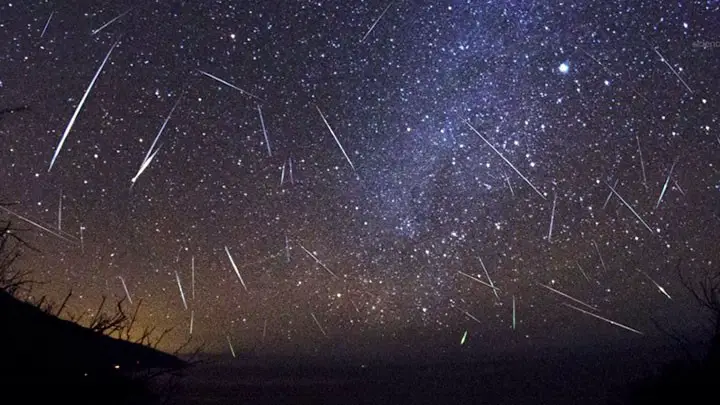
[In this image] Perseid Meteor Shower. Each year in August, Earth enters the debris stream of Comet Swift-Tuttle, causing the annual Perseid Meteor Shower.
Image source: VPM npr
Most meteoroids completely burn up in the atmosphere. If a meteoroid survives its fall and reaches Earth’s surface, it is called a meteorite.
Occasionally large meteorites and asteroids strike Earth and create pits called craters. For example, Meteor Crater Natural Landmark is a huge meteorite impact crater in the desert of northern Arizona. It is 4,000 feet (1,200 meters) wide! It was formed when a nickel-iron meteorite (about 160 ft or 50 m across) crashed into the ground 50,000 years ago. Meteorite crashes also make craters on other planets and moons.
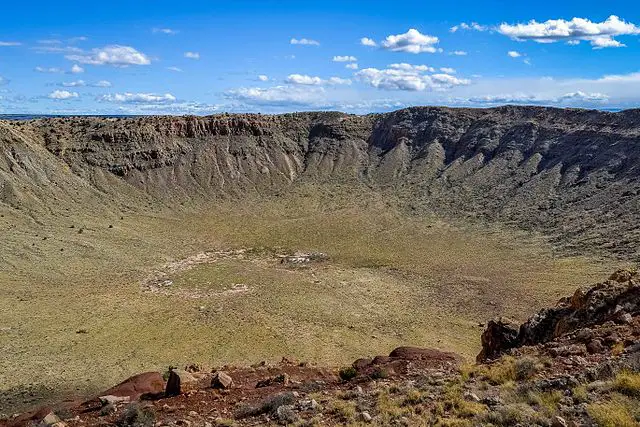
[In this image] Looking into the Meteor Crater from the north rim. For geologists, a “bolide” is a meteorite large enough to create a crater.
Image source: wiki
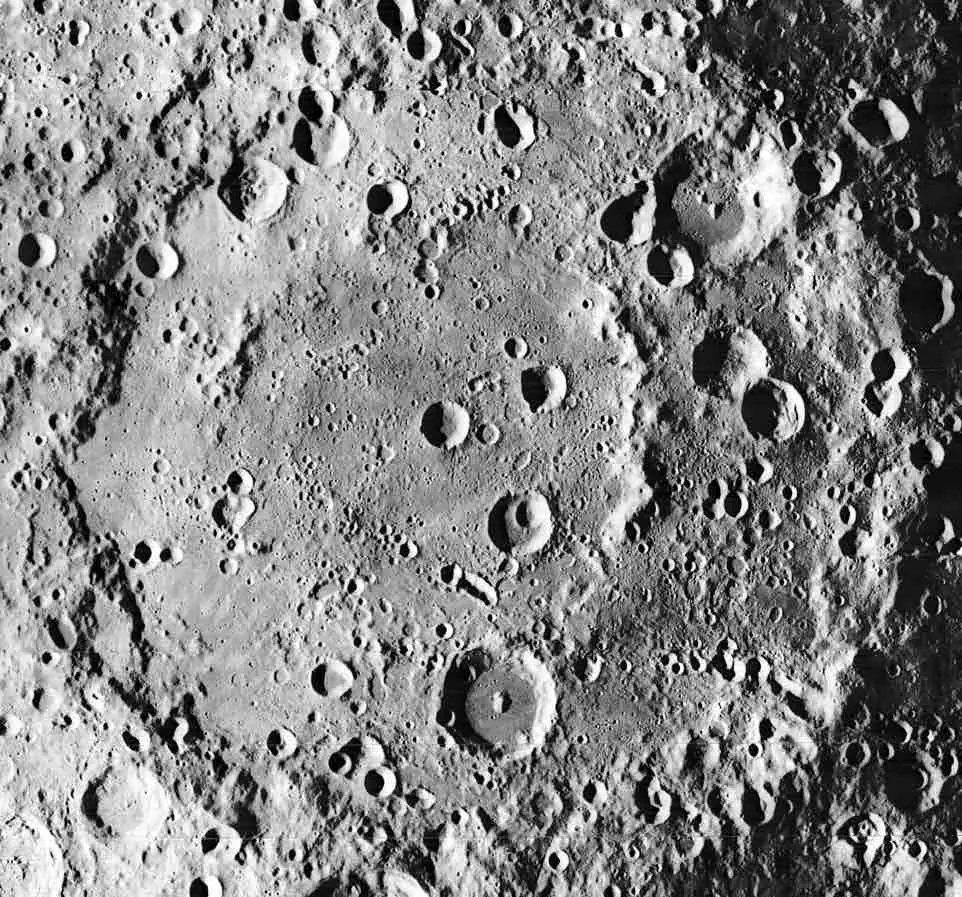
[In this image] The Moon is covered by countless big and small craters because it lacks the protection of the atmosphere.
Image source: Science ABC
What does a meteorite look like?
Meteorites vary greatly in size. However, no matter how big or small they are, the surface of meteorites is generally rounded and smooth. This is because 90% of a meteor’s mass is lost to ablation as it passes through the Earth’s atmosphere. Edges, corners, and rough surfaces are the first parts to ablate away. You can experiment with this process by putting an ice cube in water and waiting for 90% to melt. You will see the “ice cube” that remains will have no edges or points. For this reason, most stony meteorites have rounded and smooth surfaces, except where they have broken.
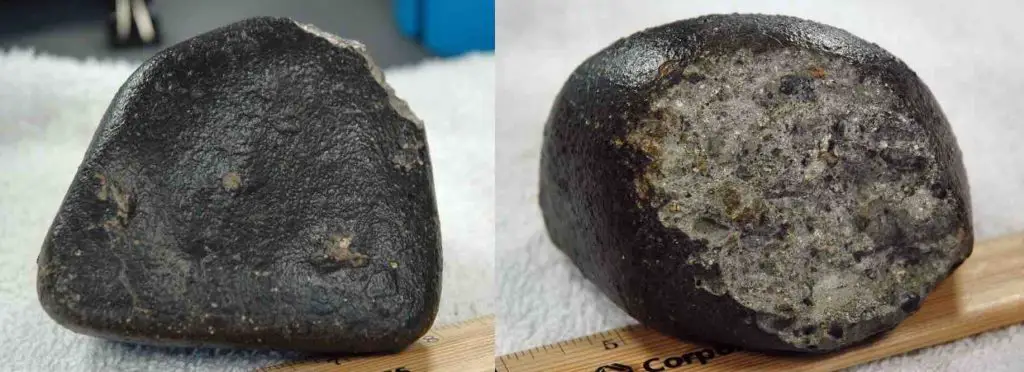
[In this image] An example (two views) of a meteorite.
A typical meteorite is rounded and has a dark, glassy fusion crust, except where the meteorite has broken.
Photo credit: Randy Korotev
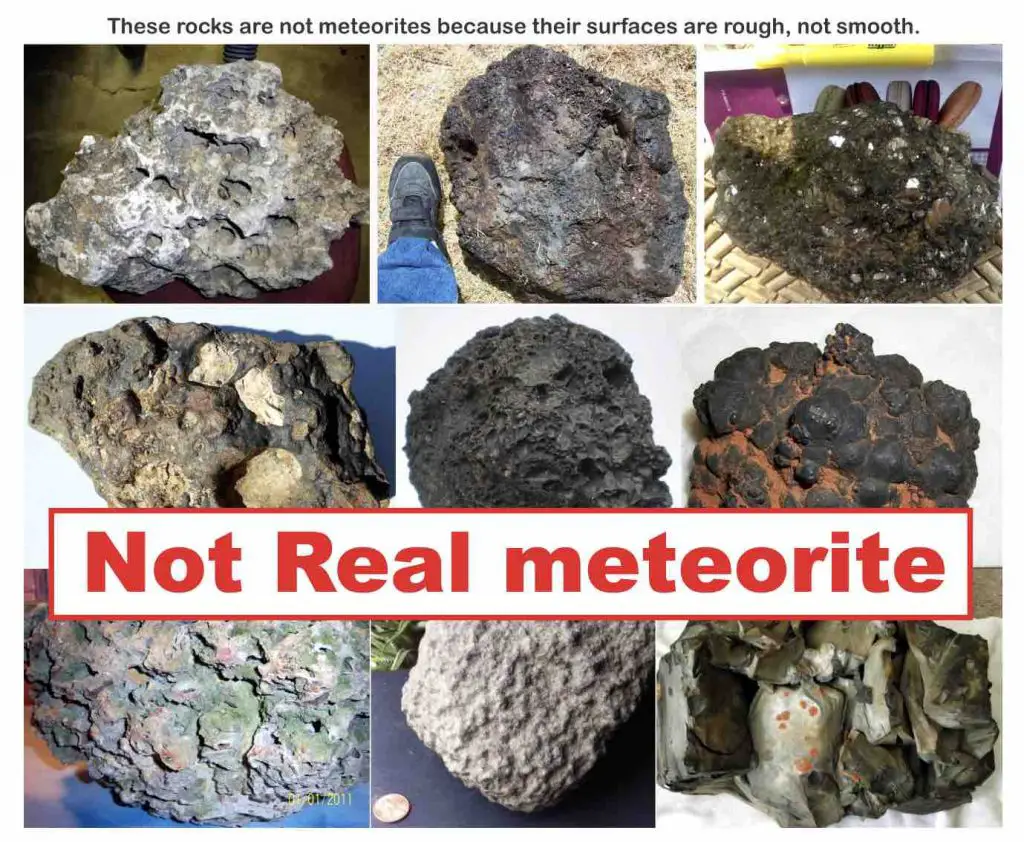
[In this image] None of these rocks in this image are a meteorite. The surfaces are too rough, and, of course, none of them have fusion crusts.
Image source: modified from Washington University in St. Louis
Are meteorites rare?
Scientists estimated that 25 million meteoroids, micrometeoroids, and other space debris enter Earth’s atmosphere each day. This results in an estimated 37,000 to 78,000 tons of meteorites hitting Earth’s surface yearly!
This number might sound a bit high, but the vast majority of these space materials are made up of micrometeorites, which are dust-sized specks about only 50 µm (0.05 mm) to 2 mm in diameter.
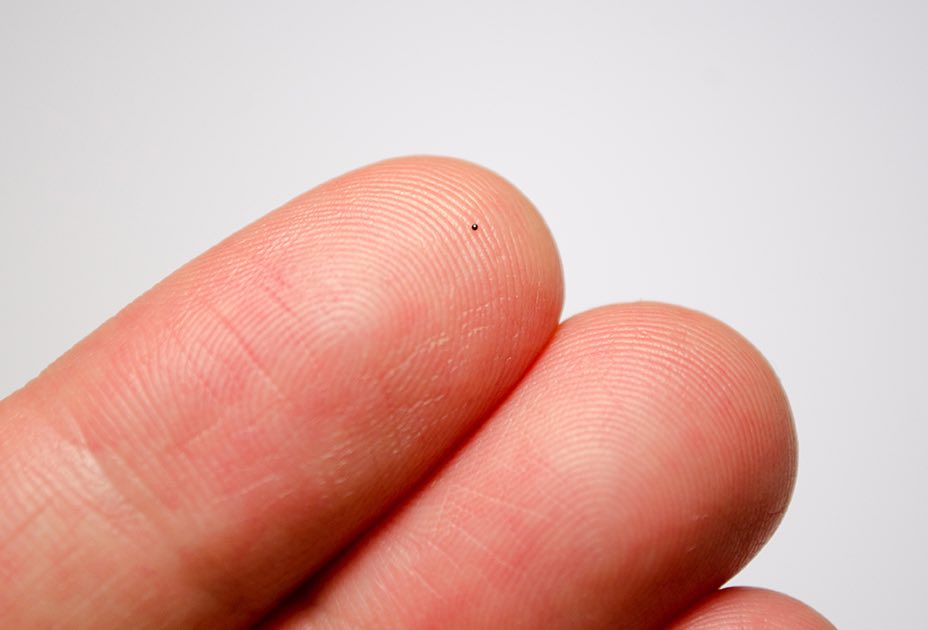
[In this image] An unclassified micrometeorite on a finger.
Photo credit: Ryan Thompson.
On the other hand, large meteorites are rare. Scientists estimate that the largest impactor to hit Earth on any given day is likely to be about 40 centimeters (16 inches), in a given year about four meters (13 ft), and in a given century, about 20 m (66 ft).
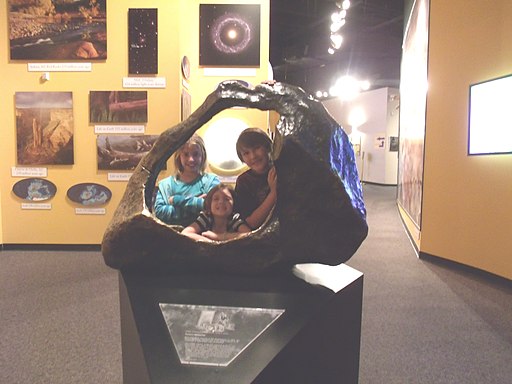
[In this image] Tucson Meteorite in the Mesa-Arizona Museum of Natural History.
It is an iron meteorite that weighed 688 kg (1517 lb.).
Image source: wiki
A two kilometers (1.2 miles) asteroid might hit Earth every couple of million years. It will generate an enormous impact of one teraton TNT explosion equivalent. We can’t predict when the next big impact will come (like the one that caused the extinction of the dinosaurs). To prepare for it, NASA has a Near-Earth object (NEO) project to monitor these asteroids that are in proximity to Earth and announce an alarm if anyone is getting too close to Earth’s orbit.
[In this video] NASA presented this animation as a map of the increased count of all known asteroids in the solar system from 1999 to 2018. Blue represents near-Earth asteroids. Orange represents main-belt asteroids between the orbits of Mars and Jupiter.
You can check NASA website for more information on the Near-Earth object (NEO) project.
Part 2. Micrometeorite Hunter
Can we find micrometeorites?
As mentioned above, thousands of tons of star debris fall on Earth annually. Can we find them?
Yes. It is estimated that about one micrometeorite lands every square meter per year. This means that there are probably lots of micrometeorites right in your backyard or local parks!
Hunting for micrometeorites
Searching for micrometeorites is fun, and everybody can find their own! Here are some tips shared from Project Stardust – an advocate for all citizens going out and finding micrometeorites established by Jon Larsen and Jan Braly Kihle.
Materials and tools
1. A good magnet – The hunt for micrometeorites begins with using a good magnet. I don’t mean the tourist souvenir magnets on your refrigerator. They are too weak! You have to borrow or purchase a Neodymium magnet with extremely powerful magnetic force. The stronger the magnet, the more likely you can seek out these tiny micrometeorites and pull them off the ground. You can find these strong magnets as hooks sold on Amazon (like the one below).

[In this image] I used this magnetic swivel hook purchased from Amazon. The magnet itself is on the underside.
!!Note: You may also find individual neodymium magnet discs or balls. I don’t suggest you buy these magnets due to the safety issue. Be careful not to swallow them, especially if you are teaching young children.
2. Several sealed plastic bags (like ziplock sandwich bags)
3. A few larger plastic bags
4. A marker pen
5. Sieves, different mesh sizes
6. A dissecting microscope or magnifier
7. Wooden (nonmagnetic) sticks
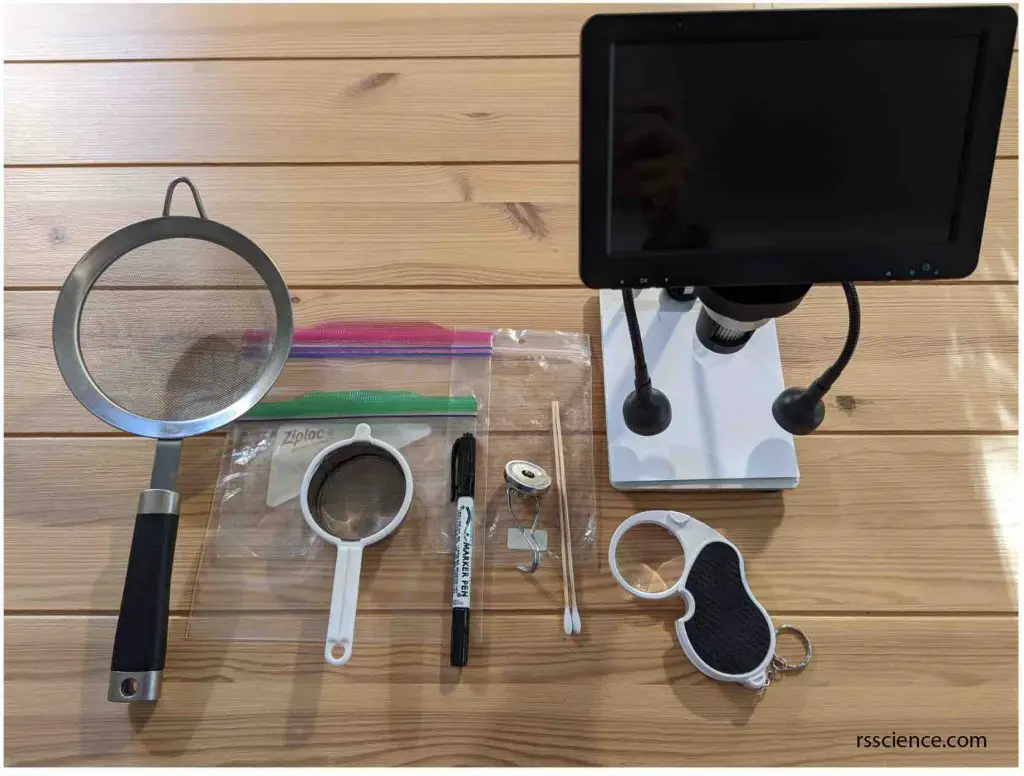
[In this image] Material you need for the micrometeorite hunting.
How to find micrometeorites step-by-step
1. Have all your tools ready. Find an outdoor place with no shelter, like a park, backyard, or sidewalk.
2. Keep your magnet inside a smaller, sealed plastic bag.

3. Hold the magnet with your hand inside a larger plastic bag.

Why use two bags? Because we will use the magnet to drag across the ground, putting the two-layered plastic bags as a barrier can protect your magnet from being damaged or contaminated. If the plastic bags become torn by sand and rocks on the ground, replace them with new ones.
4. The layers of two plastic bags should be held tightly around the magnet’s contact surface so that the face of your magnet can have the best chance to pull out the micrometeorites.
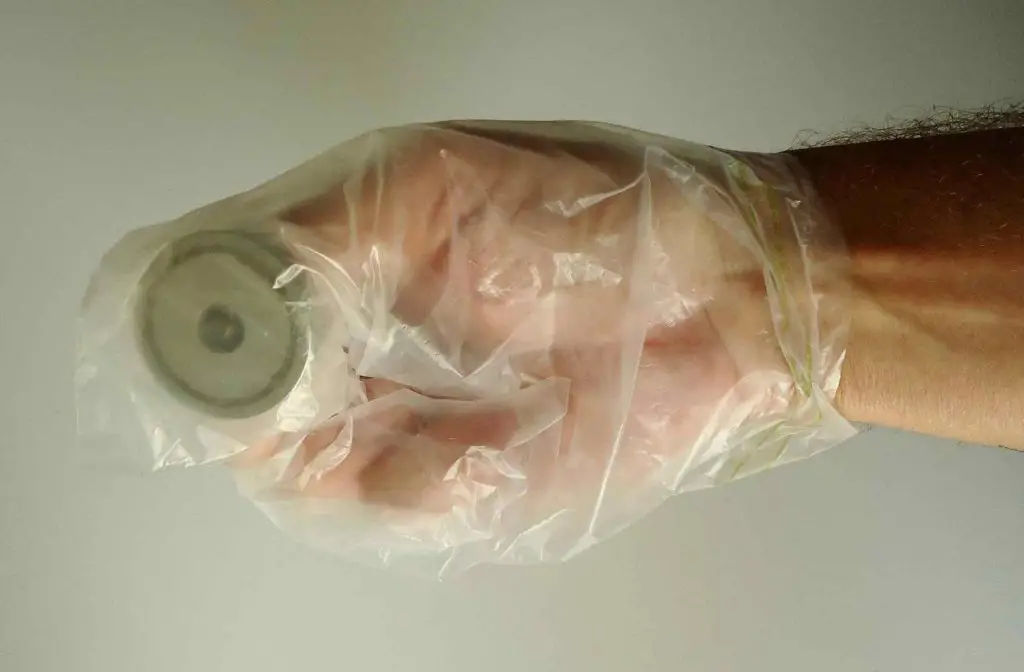
Why? Magnetic force obeys an inverse square law with distance. The force decreases significantly while the distance between the magnet and the target objects increases.
5. Hold the magnet in direct contact with the ground where you want to search and slowly move it around. If there are magnetic particles around, they will get attracted.
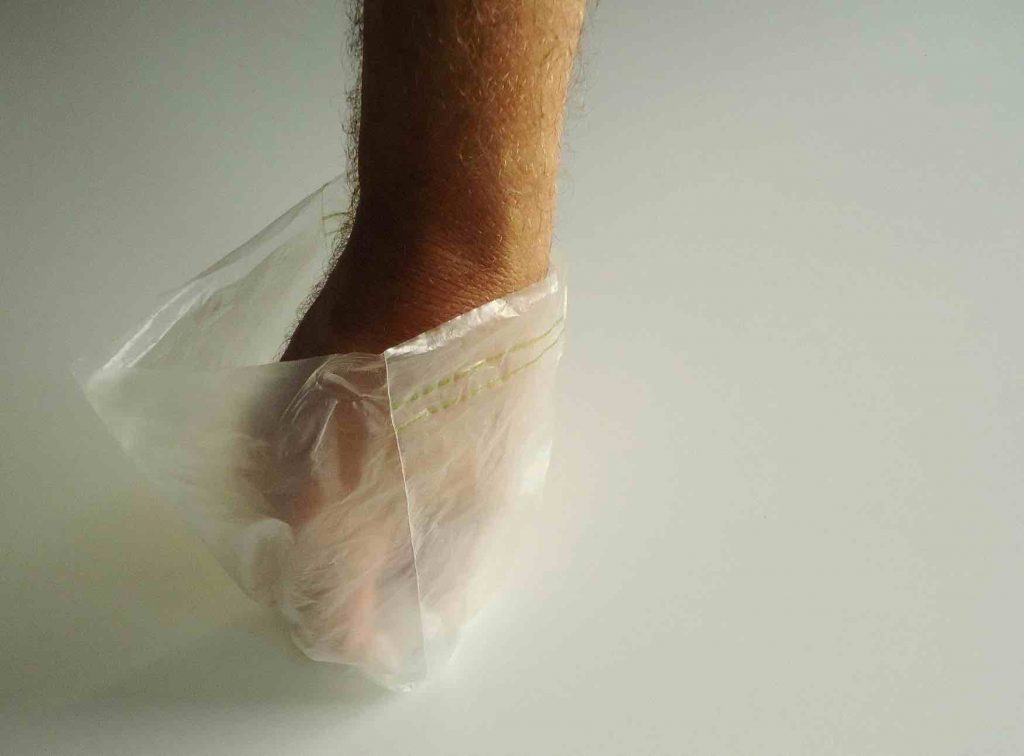
Tip: If the field is wet (after rain) or too damp, the tiny particles may stick to the ground. In this case, the magnetic force may not be strong enough to dig them out. To solve this problem, you can take samples of the wet dust/sand with a spoon, bring them home, dry them – and then try the magnet again.
If you doubt that your magnet doesn’t work, you may want to experiment with some fine iron filings to see if you can catch them from the ground. Fine iron filings are common in the classroom to demonstrate the basic concept of the magnetic field.
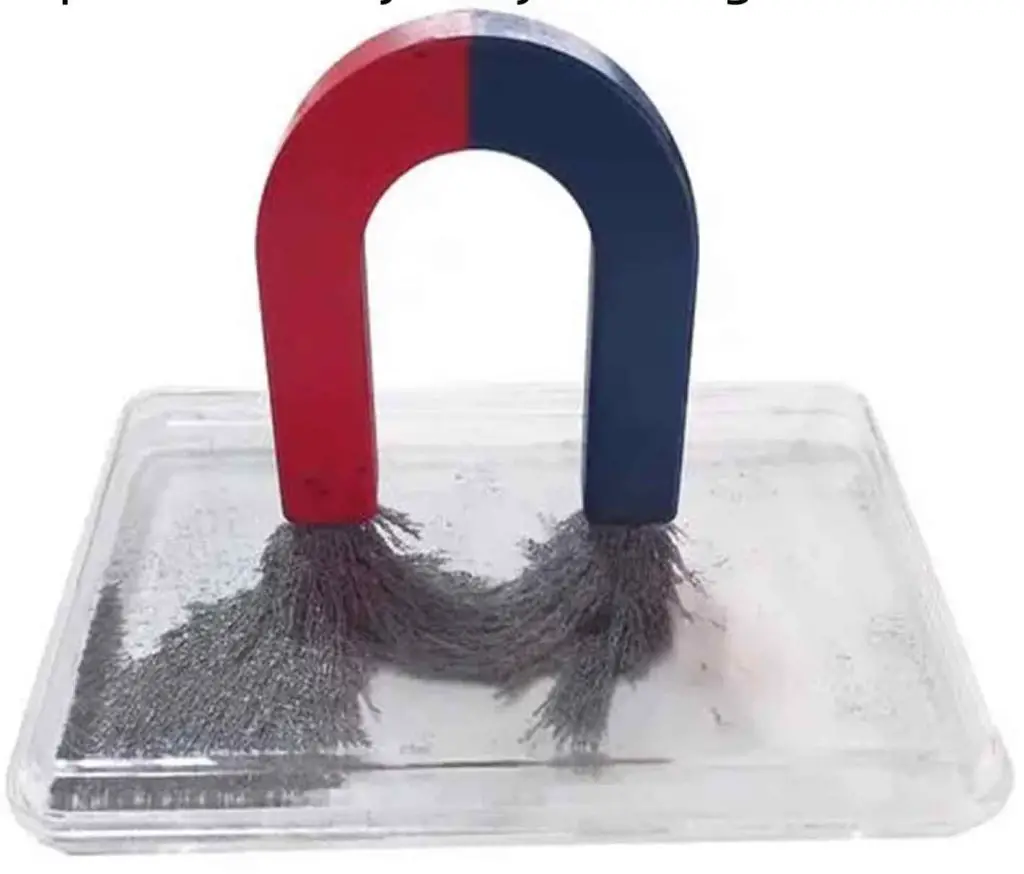
[In this image] The iron filling/ powder is suitable for displaying a magnetic field and exploring the basic concept of the magnetic field.
Image source: Amazon
6. Once you catch enough particles (the surface of the magnet is covered with specks of dust), you can unload your catching. To do so, place the whole magnet set-up (the magnet you hold wrapped with dual-layered plastic bags) into a third plastic bag in your other hand. This third bag should be a snap-and-seal bag so that you can keep what you find inside.
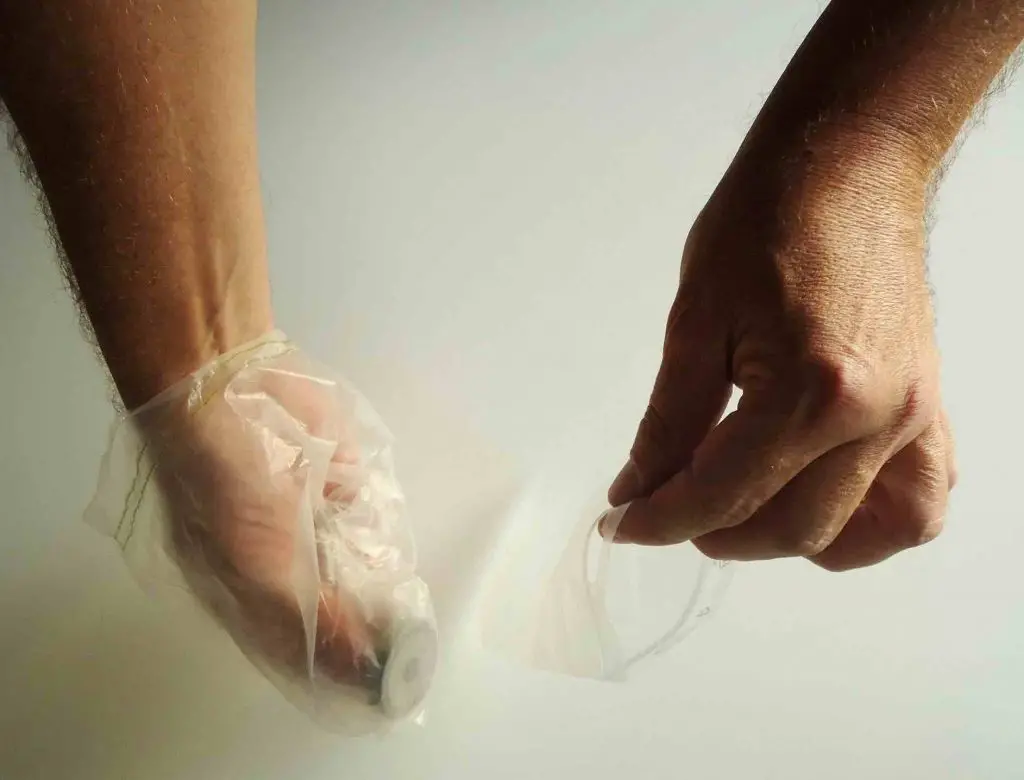
7. Carefully withdraw the magnet from the dual-layered protection bags. This will remove the magnetic force on the particles and allow them to fall into the third bag for collection.
8. You can repeat the whole procedure several times until you have enough samples from the location.
9. Label the field search bag (the third one with the samples) with a waterproof marker. You can write down the key information, including the place, the date, the weather, and preferably what type of location (remote, populated, or urban), etc. Or any other relevant information about your hunting trip.
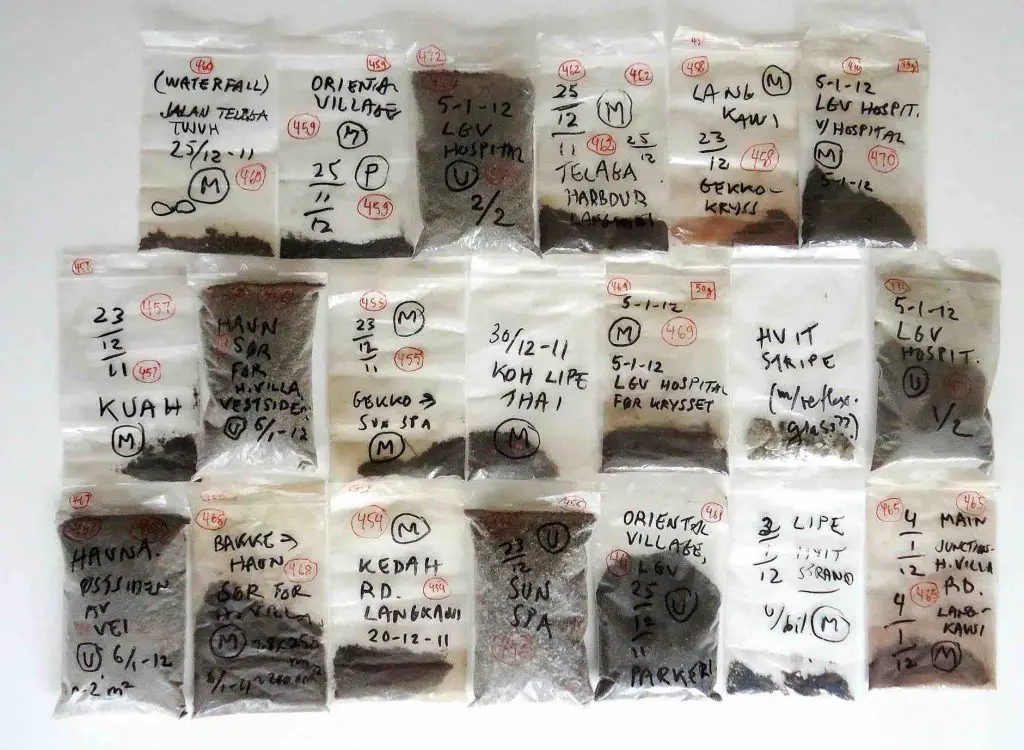
[In this image] Examples of labeled collections from Jon Larsen’s Project Stardust
Image source: Project Stardust – Jon Larsen & Jan Braly Kihle’s
10. Move to a new location to continue your search. Use new plastic bags if you want to keep your findings uncontaminated.
11. After completing a trip, weigh the bag of raw samples and record the result. If you plan to go micrometeorite hunting more than once, starting a personal database will be very useful so all specimens can be coded with the information. This will make it much easier to recall the data later when comparing samples between different hunts in different locations.
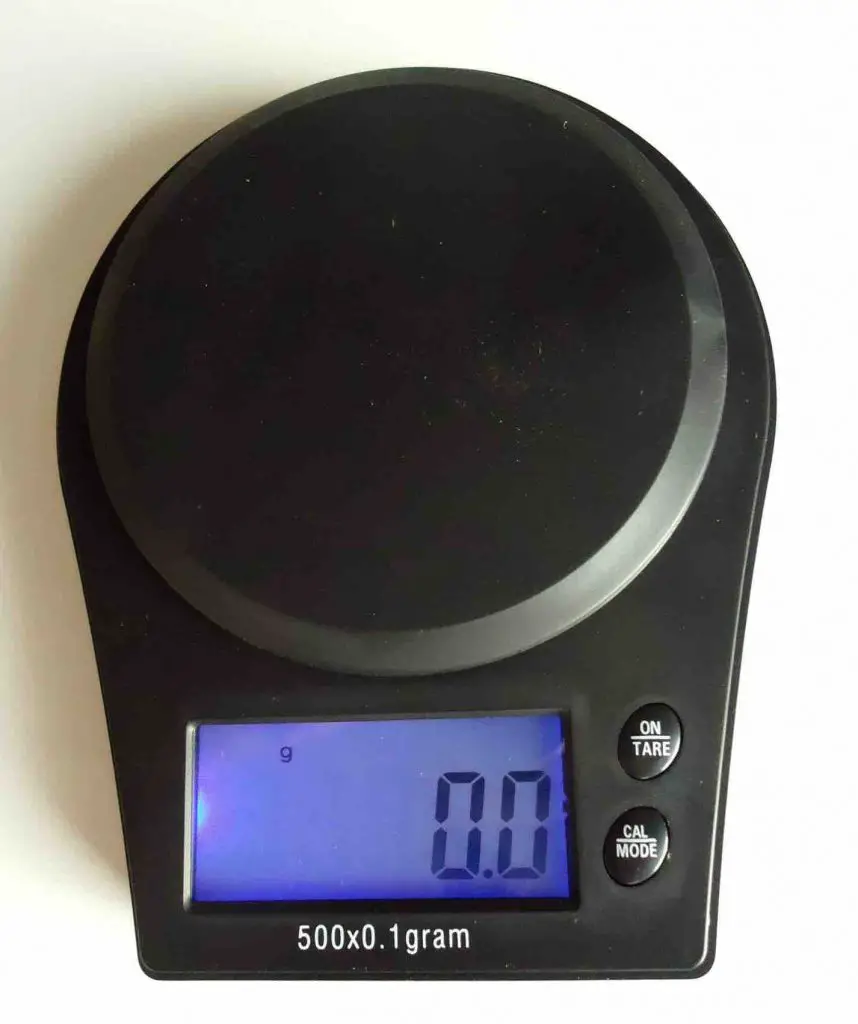
[In this image] Jon Larsen weighed his specimens and put the records in his notebook after each hunting trip.
12. Your micrometeorites may still mix with dirt. To clean them, pour your specimens into a container or jar of warm water with a little bit of soap. These micrometeorites should sink because they are heavier. Discard the dirty water and repeat until the water is clean. Dry the remaining particles on a piece of paper.
13. (Optional) Use sieves for fractionating the specimens. The fractionating makes it much easier to examine the particles in the microscope.
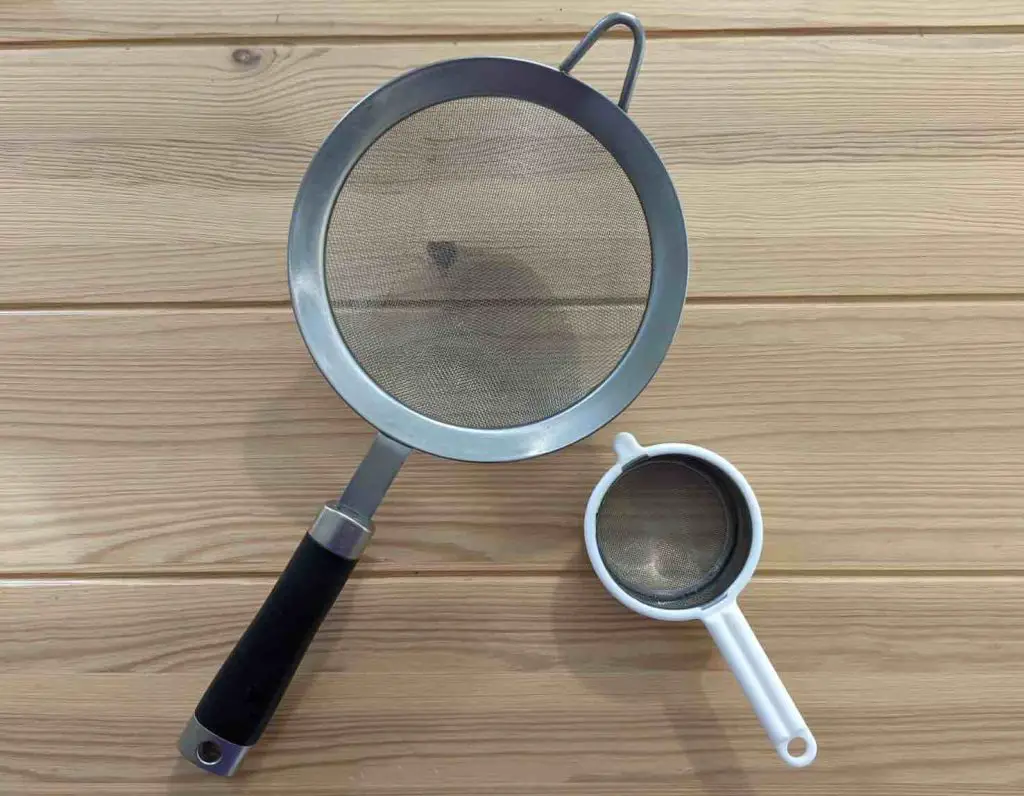
Tip: Using sieves with different mesh sizes, you can classify your specimens into different particle size ranges. For example, the specimens in the following picture were (1) >1.5 mm, (2) between 0.4 mm – 1.5 mm, and (3) <0.4 mm (from left to right). Let’s start with mesh with the largest openings, then down to the one with the smallest pores.
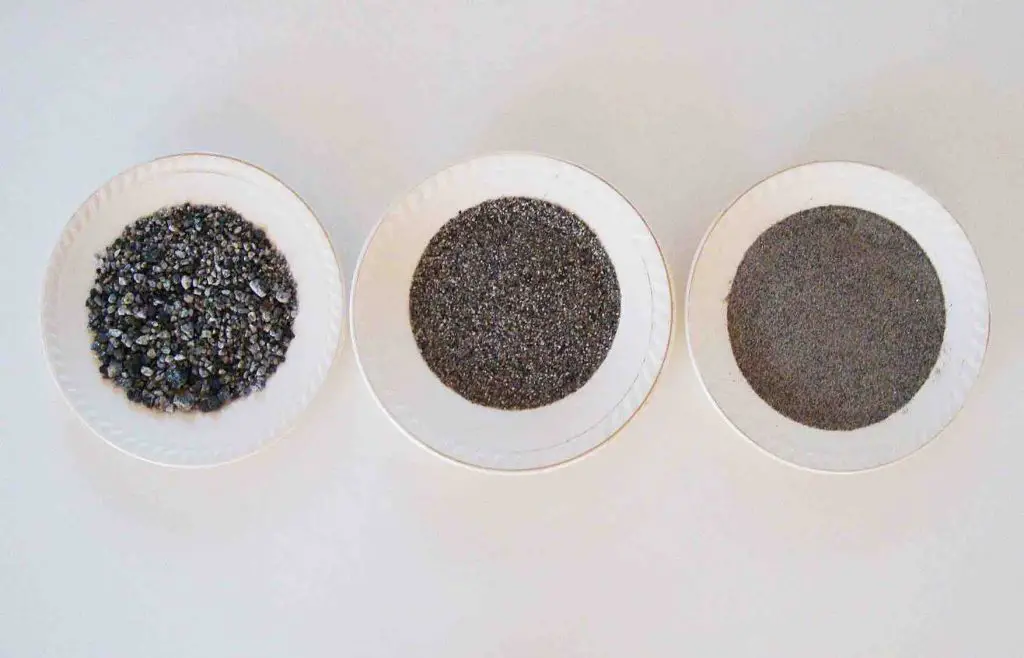
[In this image] Examples of specimens after selection based on the particle sizes.
Image source: Project Stardust – Jon Larsen & Jan Braly Kihle’s
Larger particles (sizes like grains of sand rather than dust, 0.4 mm – 1.5 mm) are easier to handle, and they can show a significant variation in morphology. However, these small fractions (<0.4 mm) may actually contain the highest number of micrometeorites.
14. Use a dissecting microscope or magnifier to examine your findings. Look for rounded spherical particles. They are more likely to be micrometeorites. Not sure what they are? See later “Are they really from the space?” for more discussion.
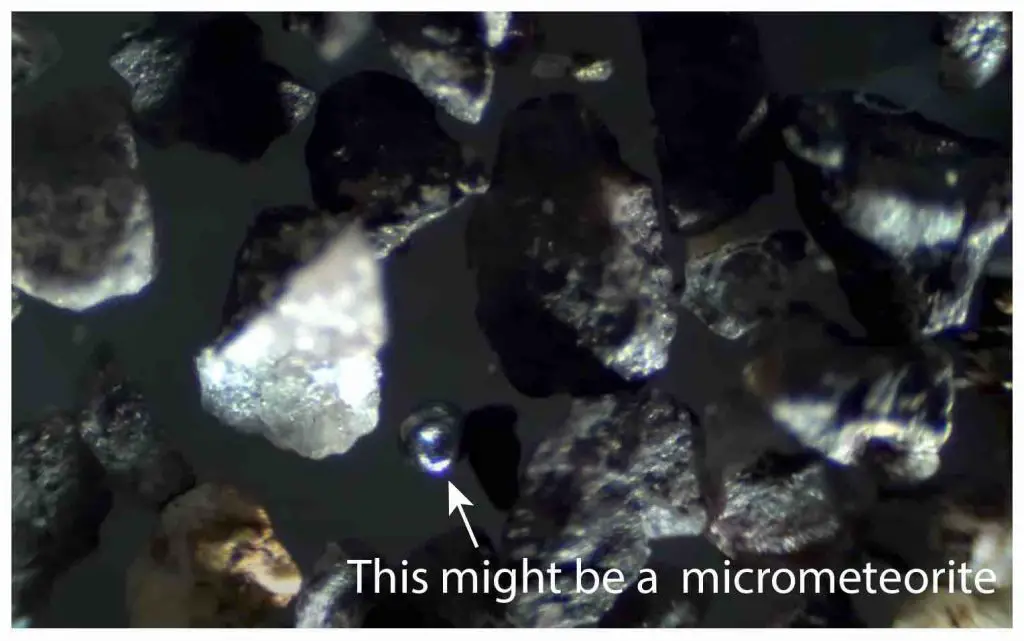
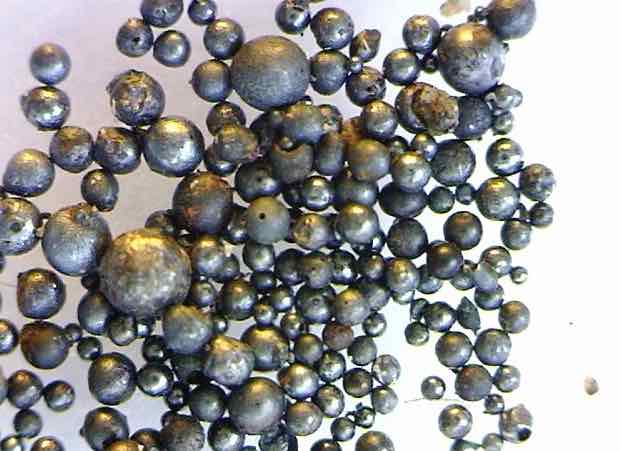
[In this image] Magnetic spherules (~0.4 – 1.2 mm) were found in Oslo, Norway by Jon Larsen & Jan Braly Kihle. These types of spherules are the most common type of micrometeorites.
Image source: Project Stardust – Jon Larsen & Jan Braly Kihle’s
Tip: Most micrometeorites will be spherical with rounded, smooth surfaces (like the picture above). Try your best to separate these spherical pieces from other particles that could be manmade or at least terrestrial. You can use a toothpick or other “nonmagnetic” tool (i.e., wooden sticks) to sort them out under the microscope.
15. Keep your findings in containers with clear labeling so you can examine them later. You could also keep a written log to keep notes and drawings about the samples for later reference.
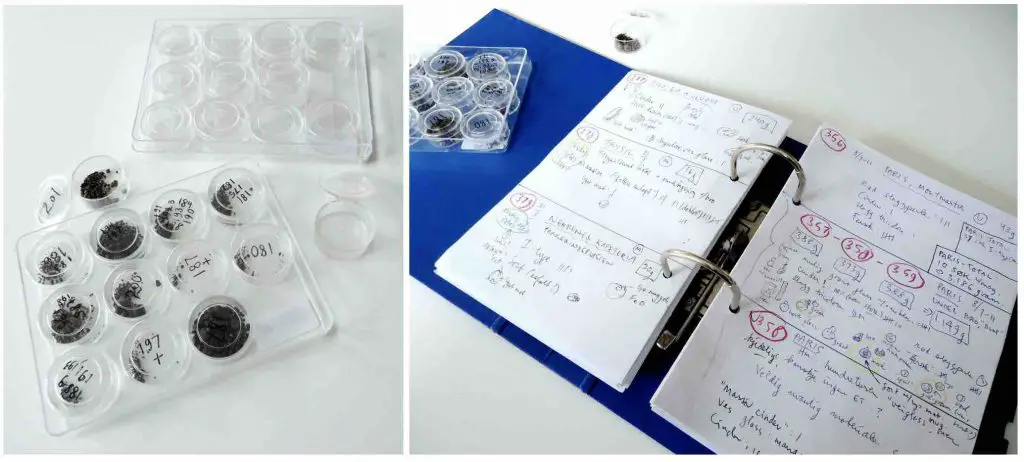
[In this image] Jon Larsen’s collection and notebook for Project Stardust.
Image source: Project Stardust – Jon Larsen & Jan Braly Kihle’s
16. If you have a USB camera, it will work perfectly. You can take photos so that you can exchange pictures of your catch with other collectors.
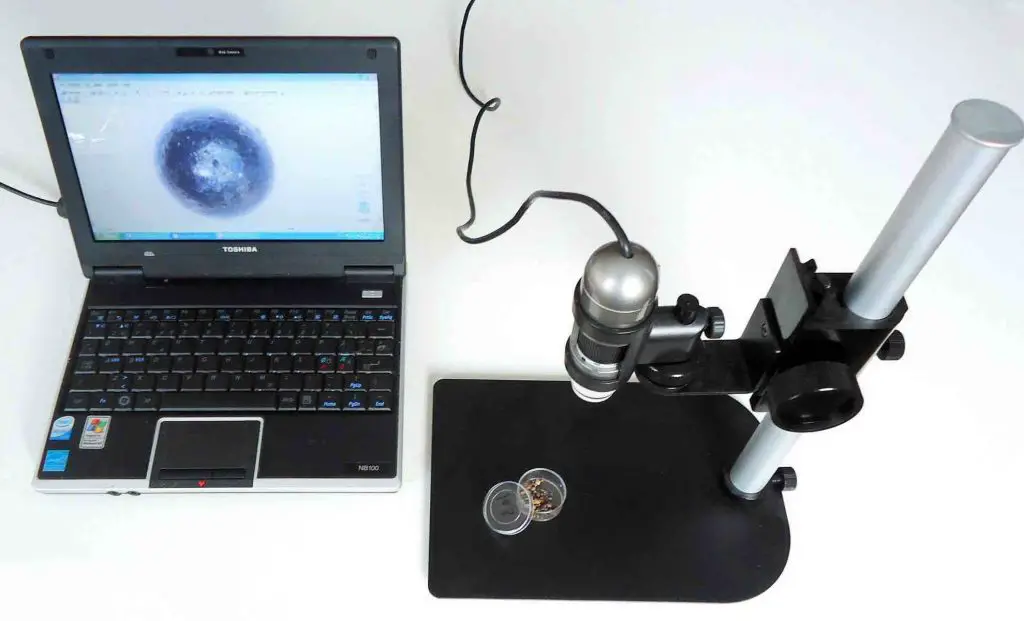
[In this image] A micrometeorite under the view of a USB camera.
17. If you want to select single objects under the microscope, you may need a dish of water, two pointed, wooden (nonmagnetic) sticks, and patience!
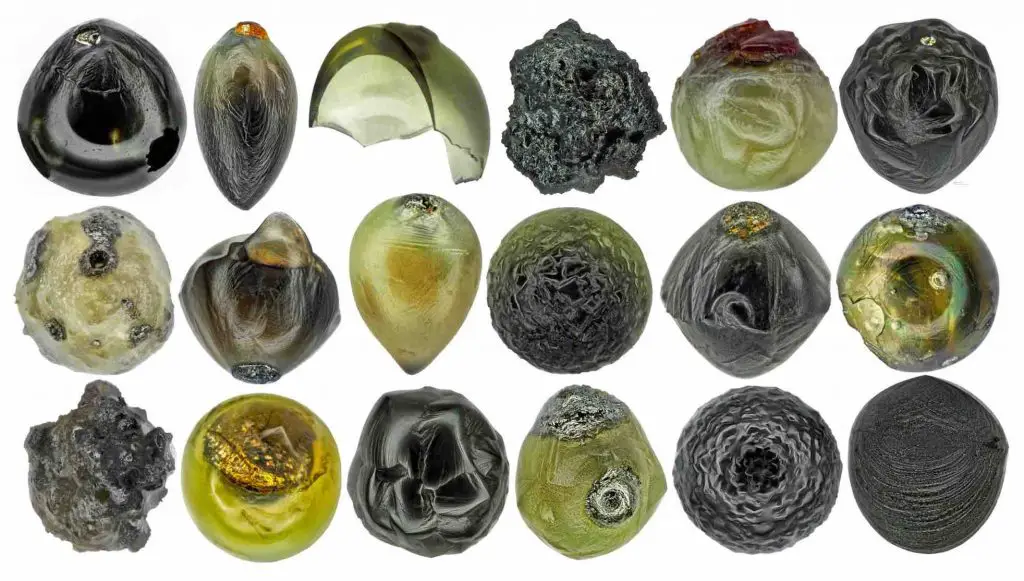
[In this image] A collection of Micrometeorites.
Photos credit: Jan Braly Kihle & Jon Larsen.
18. Many of these photos belong to Jon Larsen & Jan Braly Kihle’s Project Stardust. Check out their website/Facebook page and learn more about collecting micrometeorites. Make some new friends and compare your micrometeorites to those around the world!
Note: They also published a book, “In Search of Stardust: Amazing Micrometeorites and Their Terrestrial Imposters,” with tons of astonishing pictures of micrometeorites. You can find it on Amazon.
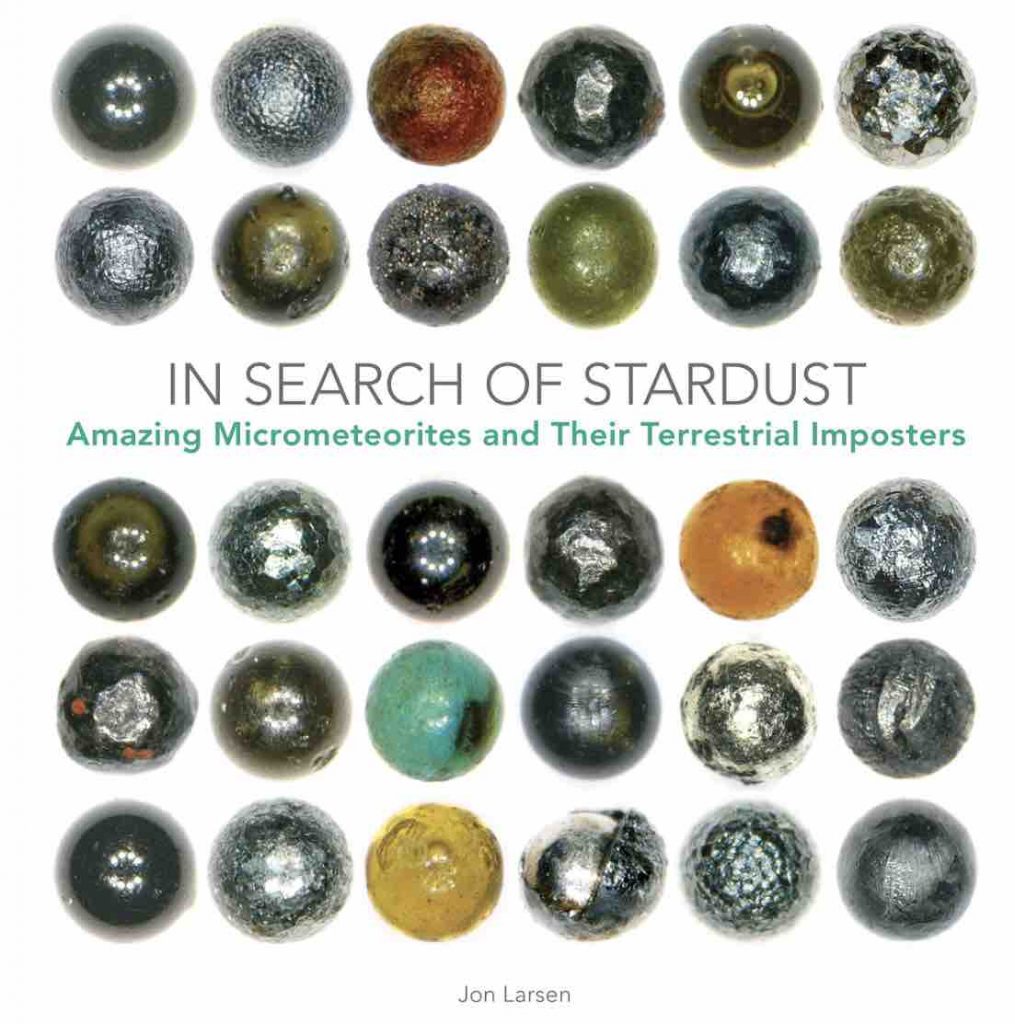
Image source: Amazon
Are they really from outer space?
This is a tough question. The true answer could be a little bit disappointing. Finding a real micrometeorite, especially in a city, is very challenging. You may need to scan hundreds of candidates to find one.
The main challenge in the search for micrometeorites in urban areas is to tell the extraterrestrial (not belonging to the earth) particles from the terrestrial (relating to the earth).
Many natural or human activities could generate tiny rounded spherical particles that look similar to micrometeorites. For example, lightning could trigger a chemical reaction to condense iron particles. Volcanic eruptions also produce glassy miniature particles. Cutting, drilling, and polishing metals with heavy mechanical machines (i.e., building houses) produce manmade iron particles as well. Even fireworks could spread tiny iron oxide particles everywhere.
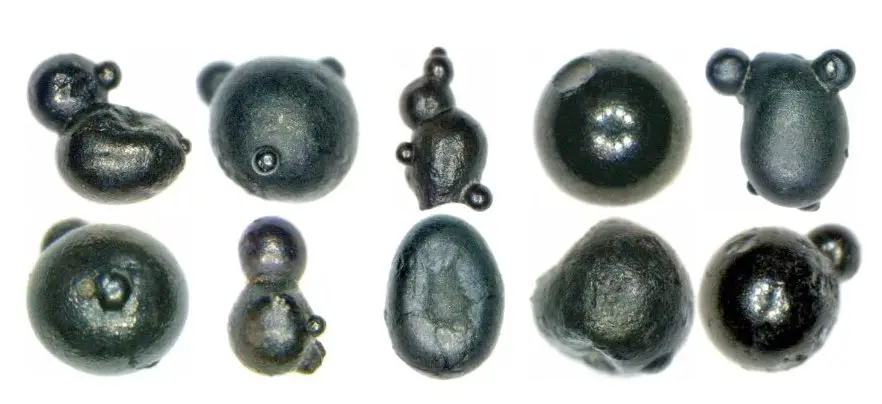
[In this image] These black magnetic spherules are likely of terrestrial origin. They could be manmade when we cut, drill, and polish metals.
Photo credit: Jon Larsen
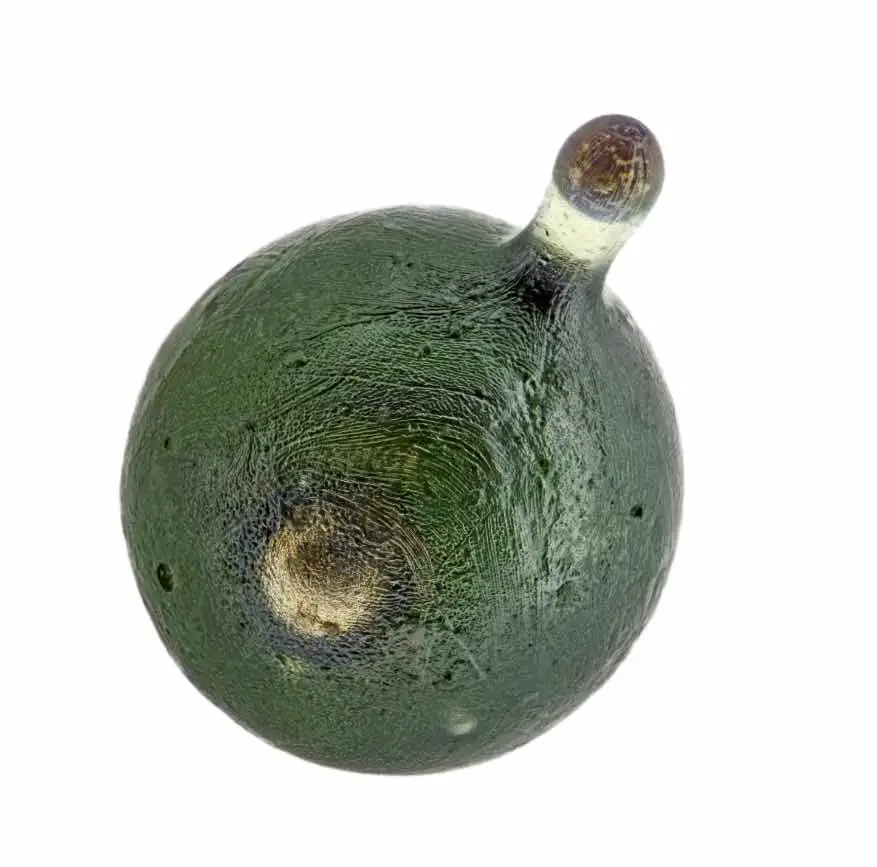
[In this image] An example of volchovites – mini spherules produced by volcanos and can be composed of a variety of trace elements, like titanium, iron, gold, and copper. Although it is not from outer space, but I won’t mind keeping it in my microscopic collection if I am lucky to encounter a beautiful one like this!
Photo credit: Jon Larsen
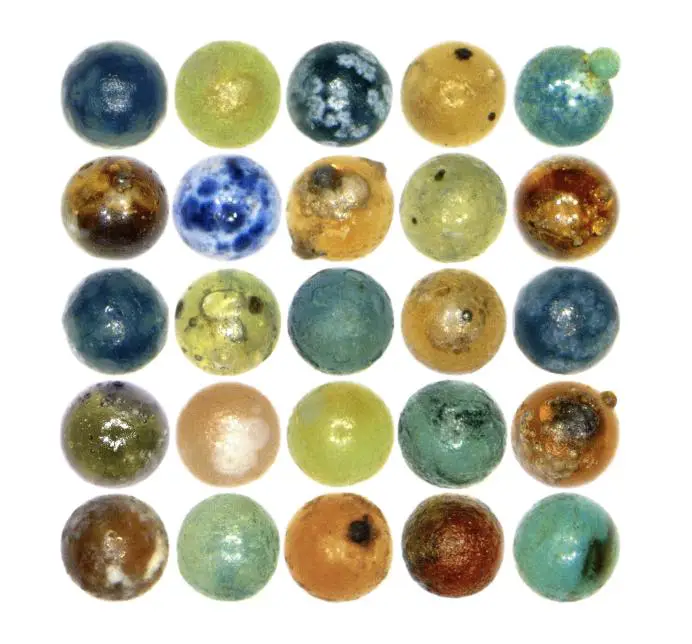
[In this image] These colorful mini balls are not micrometeorites; they are created by fireworks. Distinguishing these spherules from micrometeorites is challenging, especially when searching for space rocks in heavily populated areas.
Photo credit: Jon Larsen
In order to distinguish between micrometeorites and other types of terrestrial particles, scientists use much more powerful microscopes to look for signature features that are unique to meteorites, like chondrules. You can learn more in the book “In Search of Stardust: Amazing Micrometeorites and Their Terrestrial Imposters.”
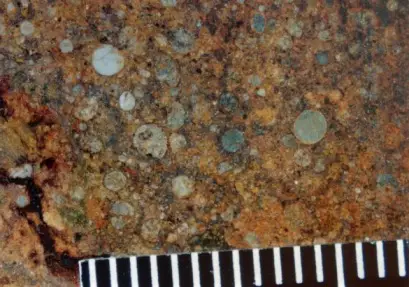
[In this image] These tiny spherical grains are chondrules (from Ancient Greek, chondros = grain). They are unique features for us to conclude that an object indeed came from space. A millimeter scale is shown.
Image source: wiki
Part 3. Types of Meteorites
Iron meteorites
Why can we catch micrometeorites with a magnet? because these particles contain certain levels of “iron.” Usually, these metallic meteorites can be of two types:
- Iron Meteorites come from the broken metal cores of destroyed asteroids. Iron meteorites are made almost entirely of solid nickel-iron metal. The iron found in iron meteorites was one of the earliest sources of usable iron available to ancient humans before the development of smelting technology in the Iron Age.
Although iron meteorites are rare in all meteorites that fall to Earth (less than 5%), they are among the most common type of meteorites that we collected. This is because the apparent difference from Earth rocks can easily recognize them. They are also resistant to weathering, so we can find very ancient iron meteorites.
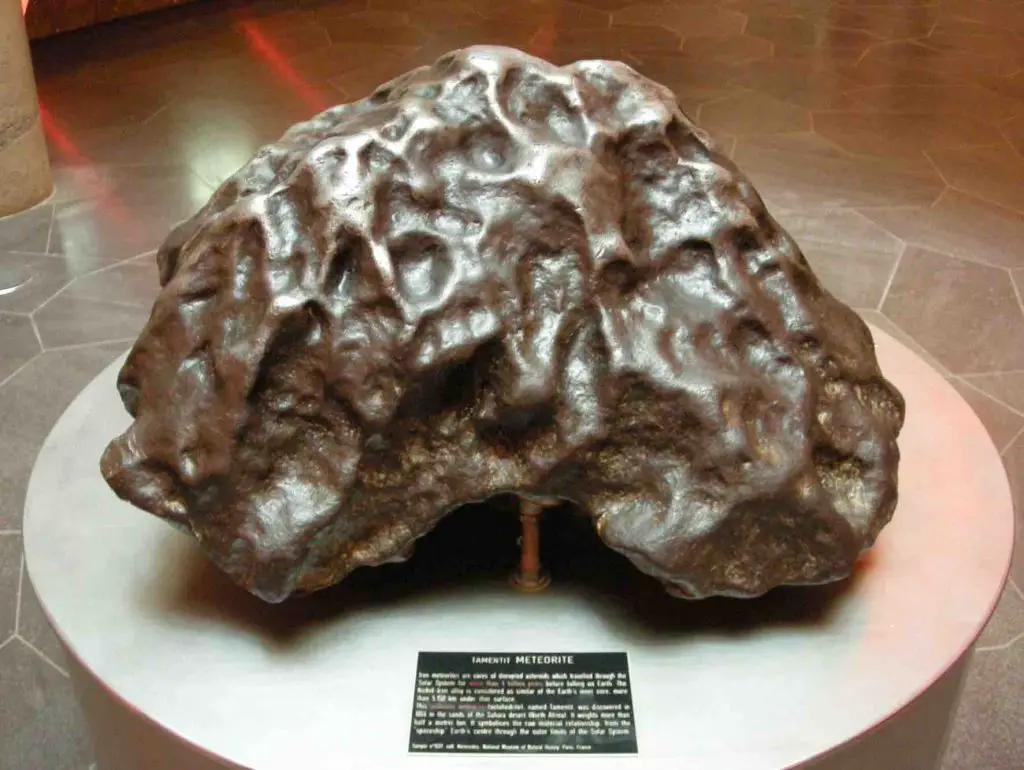
[In this image] The Tamentit Meteorite was found in Algeria and is now displayed in the National Museum of Natural History in Paris. It weighs half a ton.
Image source: wiki
Stony-iron meteorites
- Stony-Iron Meteorites contain approximately equal proportions of nickel-iron metal and stony material. Stony-Iron meteorites are pretty rare (less than 2% of all known meteorites). Their stony half could be olivine crystals (Pallasites) or basalt minerals (Mesosiderites). Pallasite meteorites comprise a network of iron-nickel metal surrounding greenish olivine minerals. Big pieces of Pallasites are beautiful extraterrestrial jewels once sliced to expose their crystals. Mesosiderites are probably formed by the collision of two asteroids.
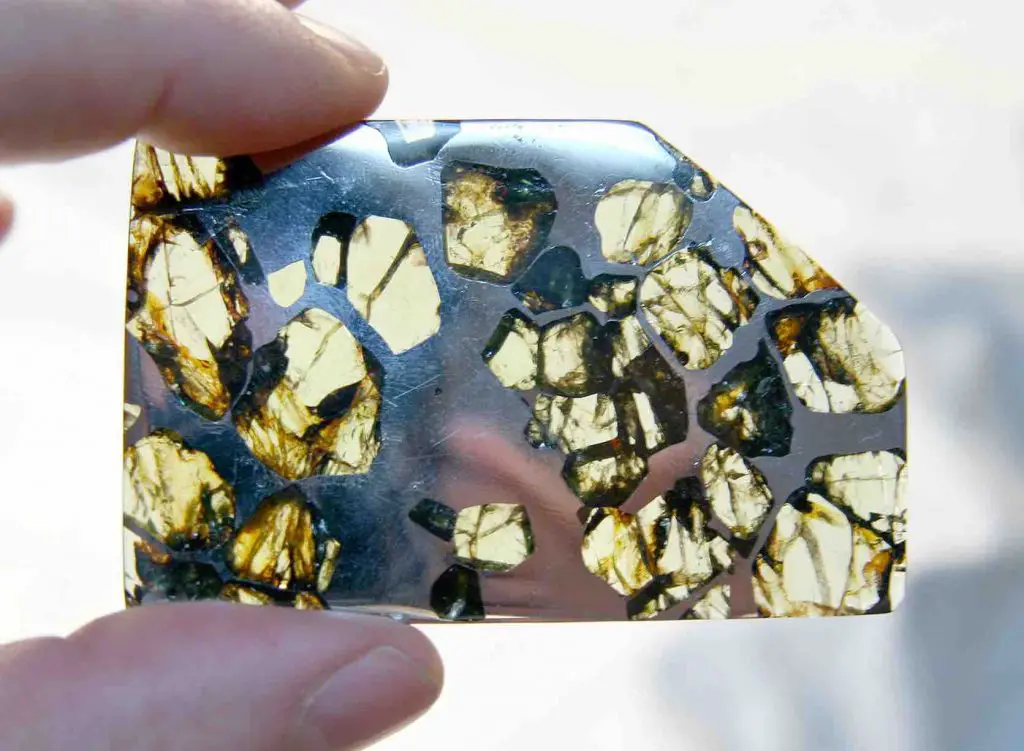
[In this image] A slice of polished Pallasite meteorites – shows the yellowish olivine crystals.
Image source: wiki
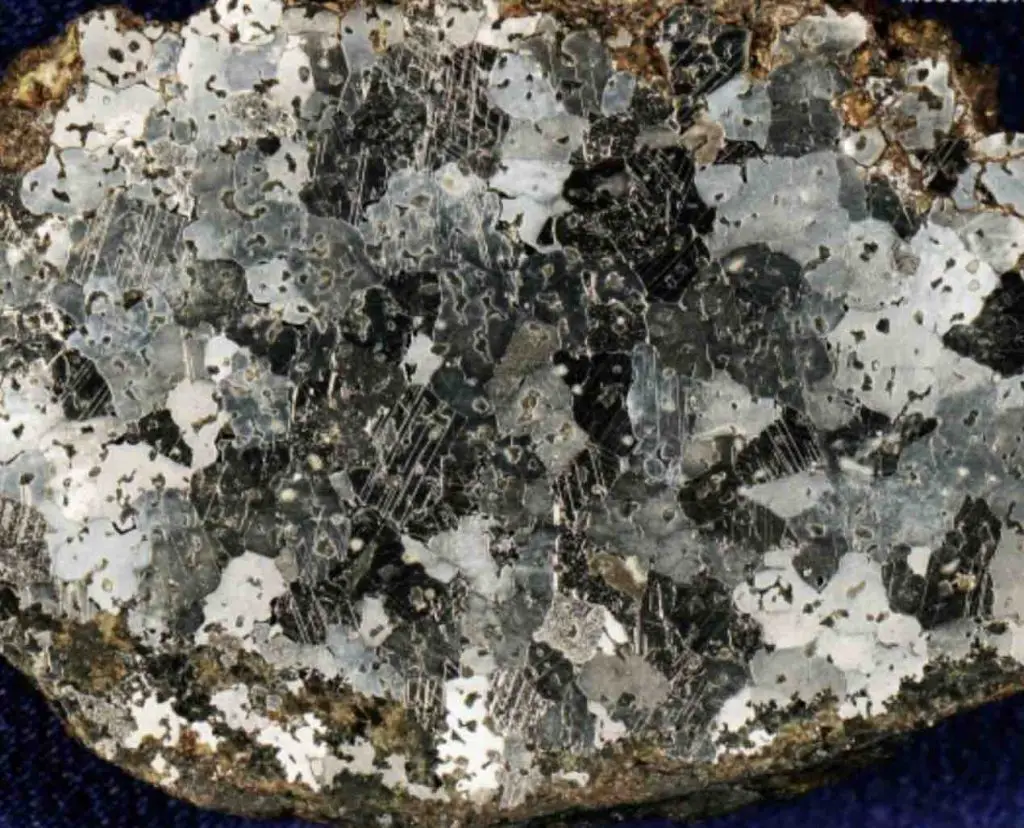
[In this image] An example of Mesosiderites.
Image source: Arizona State University
Stony meteorites
However, the meteorites lacking metallic content won’t be pulled out by our magnets:
Stony meteorites are by far the most common meteorites. More than 95% of meteorites observed to fall to Earth are stony. Stony meteorites do not contain iron materials (or very little, in the form of small-scattered grains), so they won’t be pulled out by our magnet method. They are found by the unique, glassy fusion crust and smooth surface. Stony meteorites can be divided into chondrites and achondrites.
- Chondrite Meteorites are named for their most prominent feature – millimeter-sized spherical bodies called chondrules. These chondrules (from the Greek for small sphere) formed 4.5 billion years ago in the Solar Nebula – the cloud of gas and dust from which the Sun, planets, asteroids, and comets formed. This feature is unique to meteorites, and chondrules are not found in terrestrial (Earth) rocks. Chondrites are, by far, the most abundant type of stony meteorite.
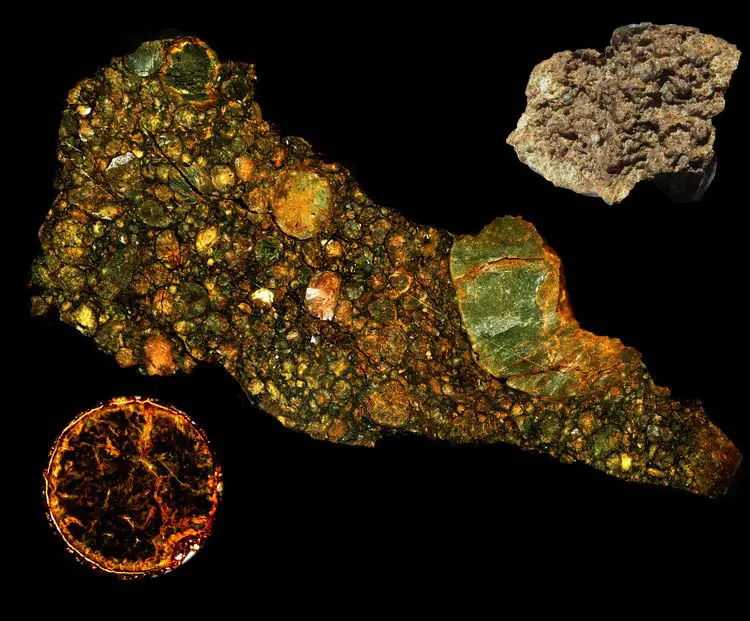
[In this image] An example of chondrite meteorites after being cut into thin sections and polished.
Image source: USRA
- Achondrites Meteorites are also stony meteorites composed primarily of silicates. However, these meteorites have experienced the geologic processes of melting and differentiation – although these happened long ago – and lost their chondrite structures. Most achondrites formed on asteroids during the birth of the Solar System, but a small number formed on Mars and the Moon. Compared to chondrites, achondrites are less common, comprising only a few percent of all meteorites.
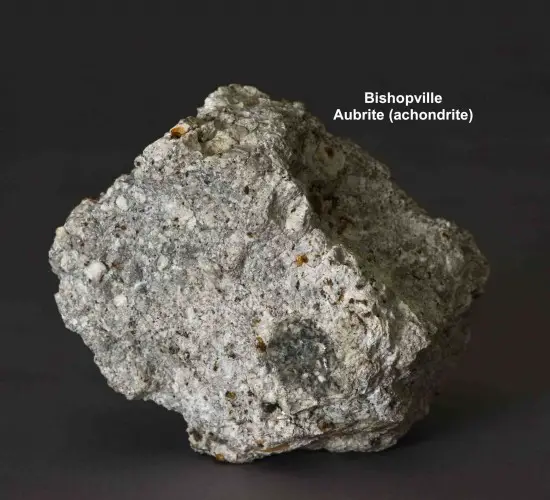
[In this image] An example of achondrites.
Image source: Arizona State University
What are tektites?
Tektites are glass objects created by melting Earth rocks when asteroids crash into the Earth. The impact melted and vaporized Earth rocks into the atmosphere. When these materials cooled, they became small blobs of glass that fell back down. Tektites are not meteorites but have their origin in catastrophic cosmic impacts. Some tektites contain sphere-shaped structures called spherules. Our magnets might find microtektites if they were mixed with metallic materials.
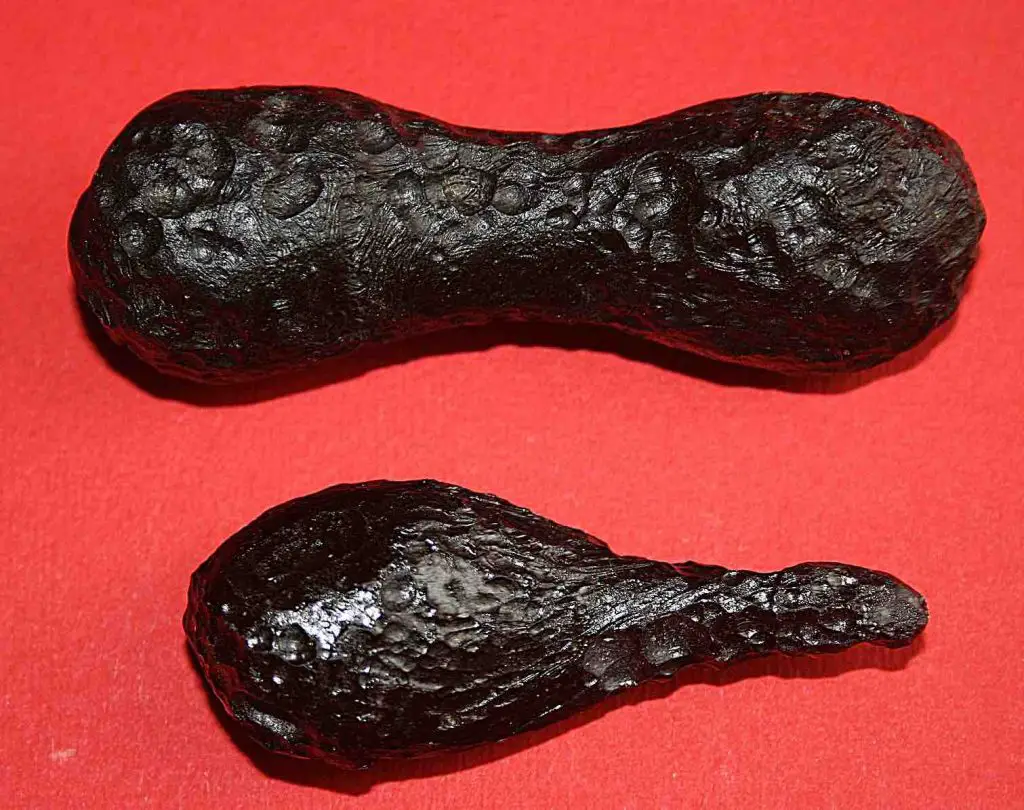
[In this image] Two splash-form tektites.
They are molten Earth rock materials from a meteorite impact. Tektites may look similar to volcanic glasses (obsidian); however, their physical characteristics are very different.
Image source: wiki
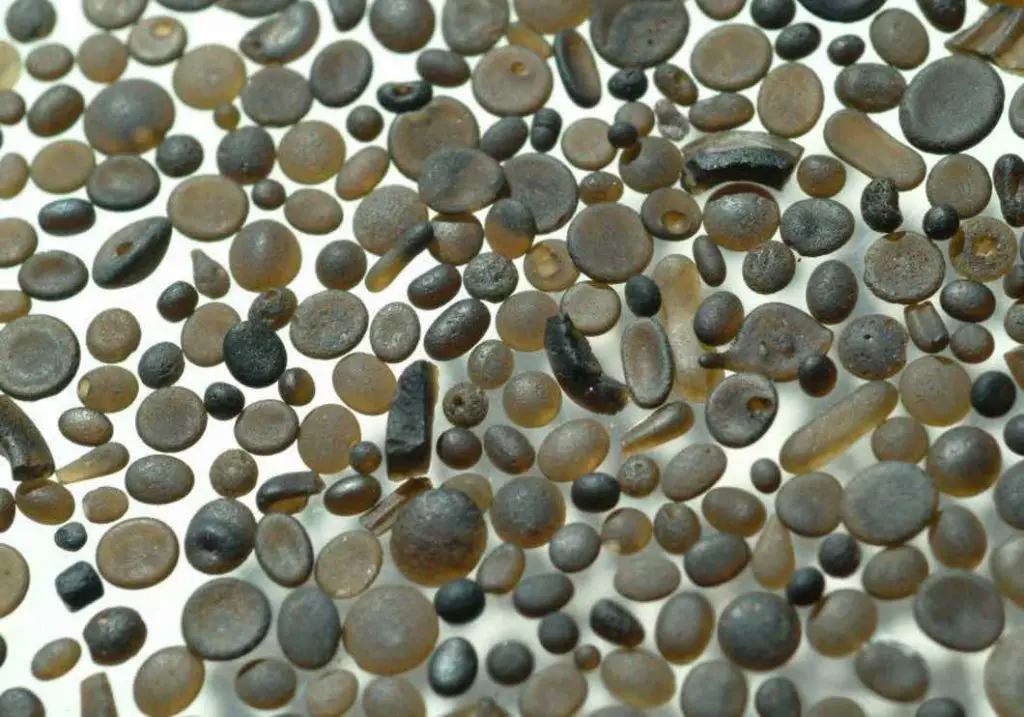
[In this image] Minitektites and microtektites.
The smallest spheres are ~1 mm in diameter. Scientists believe these glassy impact debris were formed by an asteroid or comet that impacted southeast Asia, melting crustal rocks about 790 thousand years ago. These molten “splash” material cooled and fell back down, covering a massive area of surrounding oceans as far as Australia.
Image source: B. Pillans, et. al., Geology, 2012
Summary
1. A meteoroid is a small, rocky or metallic object in outer space.
2. When a meteoroid (or a comet/asteroid) falls through the Earth’s atmosphere, it travels at a very high speed and creates a bright streak of light. This phenomenon is called a meteor or “shooting star.”
3. It is called a meteorite if a meteoroid survives its fall and reaches Earth’s surface.
4. You can find micrometeorites in your backyard or local parks. What you need are: a good magnet, several sealed plastic bags, a few larger plastic bags, markers pens, sieves with different sizes, a dissecting microscope or magnifier, and wooden sticks.
5. Two major types of meteorites: metallic meteorites and non-metallic meteorites. Metallic meteorites can be pull out by magnets, and they can be further classified iron meteorites and stony-iron meteorites. Stony meteorites are non-metallic meteorites, so they cannot be pull out by magnets. Stony meteorites can be divided into chondrites and achondrites.
Extended Read and Activities
Join Project Stardust initiated by Jon Larsen – an advocate for all citizens going out and finding micrometeorites
Video: Tiny meteorites are everywhere. Here’s how to find them.
References
“Facebook page of Project Stardust – Jon Larsen & Jan Braly Kihle”
“Book – In Search of Stardust: Amazing Micrometeorites and Their Terrestrial Imposters”
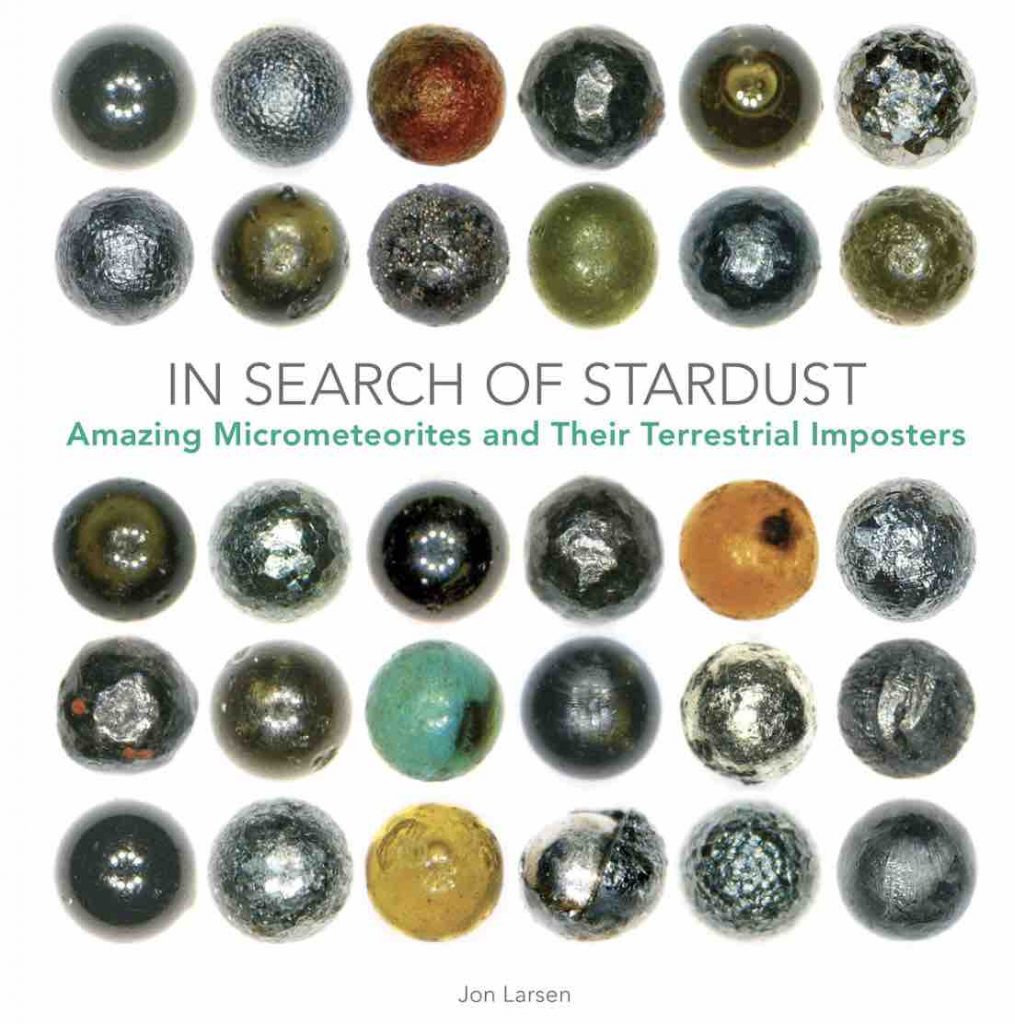
“NASA Center for Near-Earth Objects Study”
“Some Meteorite Information” by Randy L. Korotev, Department of Earth and Planetary Sciences, Washington University in St. Louis
“What are meteorites?” – NASA Astromaterials Research and Exploration Science
Most photo source from project stardust

